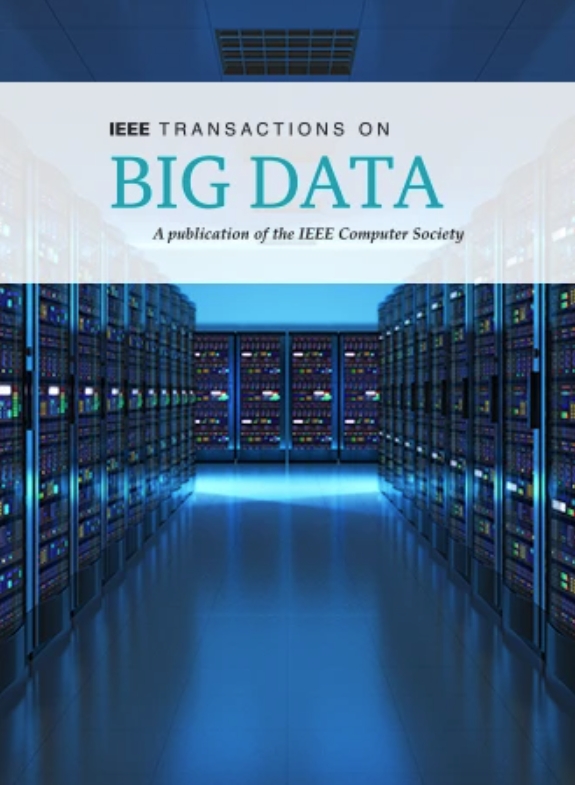Weakly-Supervised Cross-Domain Segmentation of Electron Microscopy With Sparse Point Annotation
IF 7.5
3区 计算机科学
Q1 COMPUTER SCIENCE, INFORMATION SYSTEMS
引用次数: 0
Abstract
Accurate segmentation of organelle instances from electron microscopy (EM) images plays an essential role in many neuroscience researches. However, practical scenarios usually suffer from high annotation costs, label scarcity, and large domain diversity. While unsupervised domain adaptation (UDA) that assumes no annotation effort on the target data is promising to alleviate these challenges, its performance on complicated segmentation tasks is still far from practical usage. To address these issues, we investigate a highly annotation-efficient weak supervision, which assumes only sparse center-points on a small subset of object instances in the target training images. To achieve accurate segmentation with partial point annotations, we introduce instance counting and center detection as auxiliary tasks and design a multitask learning framework to leverage correlations among the counting, detection, and segmentation, which are all tasks with partial or no supervision. Building upon the different domain-invariances of the three tasks, we enforce counting estimation with a novel soft consistency loss as a global prior for center detection, which further guides the per-pixel segmentation. To further compensate for annotation sparsity, we develop a cross-position cut-and-paste for label augmentation and an entropy-based pseudo-label selection. The experimental results highlight that, by simply using extremely weak annotation, e.g., 15% sparse points, for model training, the proposed model is capable of significantly outperforming UDA methods and produces comparable performance as the supervised counterpart. The high robustness of our model shown in the validations and the low requirement of expert knowledge for sparse point annotation further improve the potential application value of our model.利用稀疏点注释对电子显微镜进行弱监督跨域分割
从电子显微镜(EM)图像中准确分割细胞器实例在许多神经科学研究中发挥着至关重要的作用。然而,实际应用场景通常存在注释成本高、标签稀缺和领域多样性大等问题。无监督领域适应(UDA)假定目标数据不需要注释,有望缓解这些挑战,但它在复杂的分割任务中的表现离实际应用还很远。为了解决这些问题,我们研究了一种注释效率很高的弱监督方法,它只假定目标训练图像中一小部分对象实例的中心点稀疏。为了在部分点注释的情况下实现精确分割,我们引入了实例计数和中心检测作为辅助任务,并设计了一个多任务学习框架,以利用计数、检测和分割之间的相关性,这些任务都是部分或无监督的任务。基于这三个任务的不同领域不变量,我们使用一种新颖的软一致性损失作为中心检测的全局先验来执行计数估计,从而进一步指导每像素分割。为了进一步弥补注释的稀疏性,我们开发了一种用于标签增强的交叉位置剪贴法和一种基于熵的伪标签选择法。实验结果表明,只需使用极弱的注释(如 15% 的稀疏点)进行模型训练,所提出的模型就能明显优于 UDA 方法,其性能可与有监督的对应方法相媲美。我们的模型在验证中表现出的高鲁棒性和稀疏点标注对专家知识的低要求进一步提高了我们模型的潜在应用价值。
本文章由计算机程序翻译,如有差异,请以英文原文为准。
求助全文
约1分钟内获得全文
求助全文
来源期刊

IEEE Transactions on Big Data
Multiple-
CiteScore
11.80
自引率
2.80%
发文量
114
期刊介绍:
The IEEE Transactions on Big Data publishes peer-reviewed articles focusing on big data. These articles present innovative research ideas and application results across disciplines, including novel theories, algorithms, and applications. Research areas cover a wide range, such as big data analytics, visualization, curation, management, semantics, infrastructure, standards, performance analysis, intelligence extraction, scientific discovery, security, privacy, and legal issues specific to big data. The journal also prioritizes applications of big data in fields generating massive datasets.
 求助内容:
求助内容: 应助结果提醒方式:
应助结果提醒方式:


